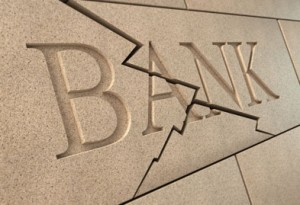 Microfinance, sometimes called microcredit, means giving credit, savings, and general banking services to the millions of people who are unable to qualify for these services from a regular banking institution. Generally, this means a person lacking a certain amount of collateral – assets or money used to “secure” regular financing. Banking the “unbankable” is made possible with community-based approaches to lending because in general, banks are for people with money, not for people without (van Maanen, 2004).
Microfinance, sometimes called microcredit, means giving credit, savings, and general banking services to the millions of people who are unable to qualify for these services from a regular banking institution. Generally, this means a person lacking a certain amount of collateral – assets or money used to “secure” regular financing. Banking the “unbankable” is made possible with community-based approaches to lending because in general, banks are for people with money, not for people without (van Maanen, 2004).
We’ve all heard the saying “If you give a man a fish, you feed him for a day, but if you teach a man to fish, you feed him for the rest of his life.” That’s all well and good, but if the person in question has no fishing pole, those fishing skills aren’t much help. Microfinance can get that fishing pole. With microfinance, this person can catch more fish than they can eat. They can sell a few, pay you back for the pole, and become financially self-sufficient. Instead of being dependent on charity, they can become a contributing member of society who’s in control of their own life. That’s a win-win situation all around.
A microcredit loan may range from fewer than $100 to perhaps a few thousand dollars, depending on the situation. These loans also benefit the creditor – they’re a manageable amount for the client, and easier to pay back than a regular, large loan. These microloans tend to have an extremely high success rate when it comes to being being paid back, and several organizations providing these loans report a success rate around 97%.
The concept of microfinance began as an alternative way to assist developing countries. The concept is nothing new; the term “microfinance” became a buzzword in the 1970s and has been slowly developing and evolving for decades, but the positive impact of this service isn’t limited to the developing world. There are plenty of “unbankables” right here in Canada – people who have valuable skills and fantastic ideas, but who are trapped by their financial situation. At GoForth Institute, we believe that to build a nation of successful entrepreneurs, they need access to three things:
- Entrepreneurship education
- Mentorship, advice, counselling and support
- Access to microfinance and loans
Microfinance can mean the difference between being dependent on aid, and being self-sufficient. It can mean the difference between small business failure, and entrepreneurial freedom. It can be the differentiating factor – the tipping point – between the world as we know it now, and the world as it could be, if every person’s skills, drive and potential had the opportunity to flourish.
Want to read more?
Kiva, which facilitates the crowdfunding of small business microloans in increments of $25 or more
Microfinance and education- real people and a real impact at Huffington Post
How the ‘world’s bank’ can create the next billion entrepreneurs at Wired
Microfinance comes of age at INSEAD Knowledge

 We wanted to share with you four articles and blog posts we came across recently that we hope will offer some small business inspiration or useful advice. Let us know in the comments if there’s something you read this week that you want to share!
We wanted to share with you four articles and blog posts we came across recently that we hope will offer some small business inspiration or useful advice. Let us know in the comments if there’s something you read this week that you want to share! In this month’s GoForth Institute newsletter, we’re answering the question,
In this month’s GoForth Institute newsletter, we’re answering the question,